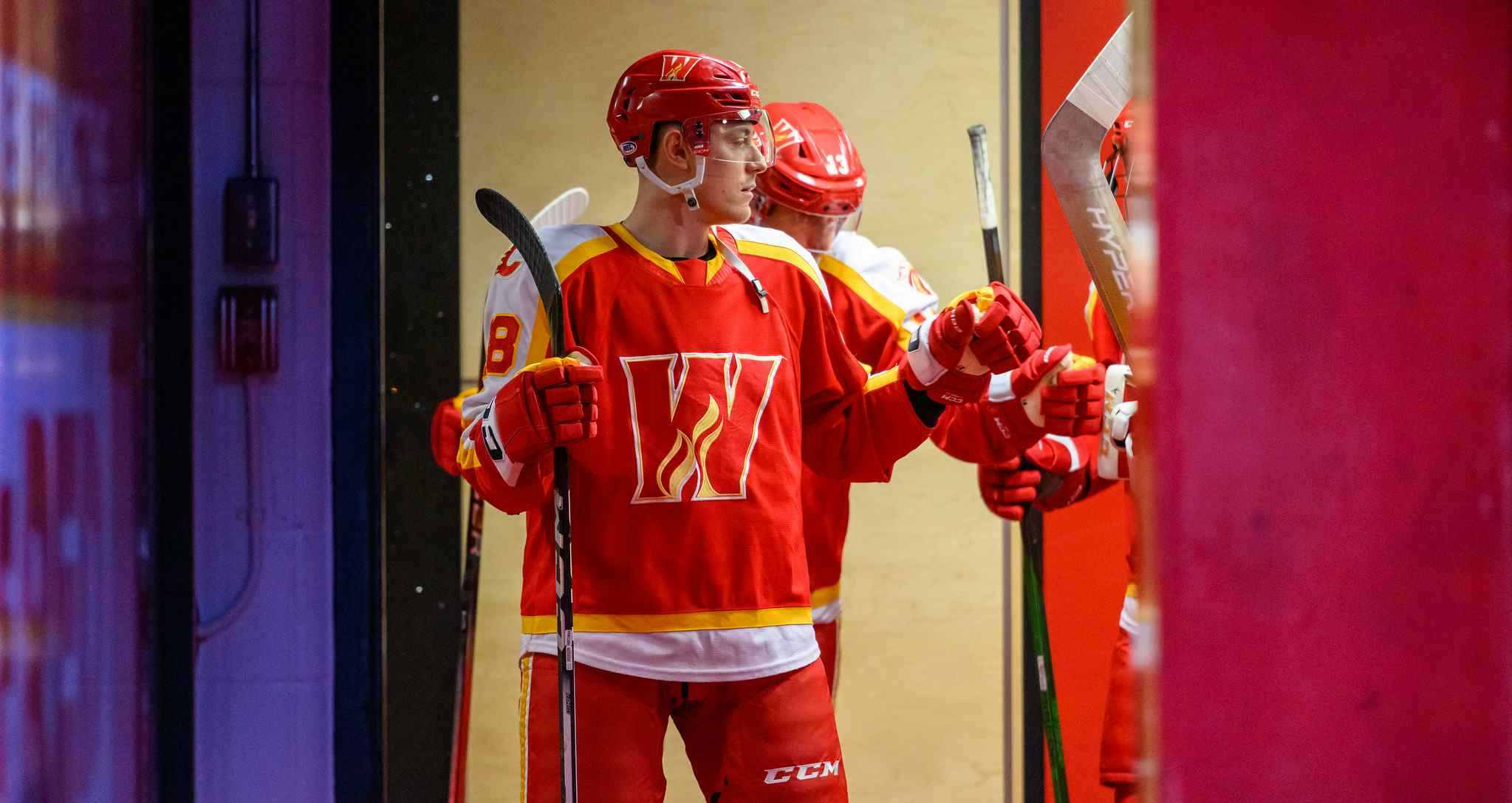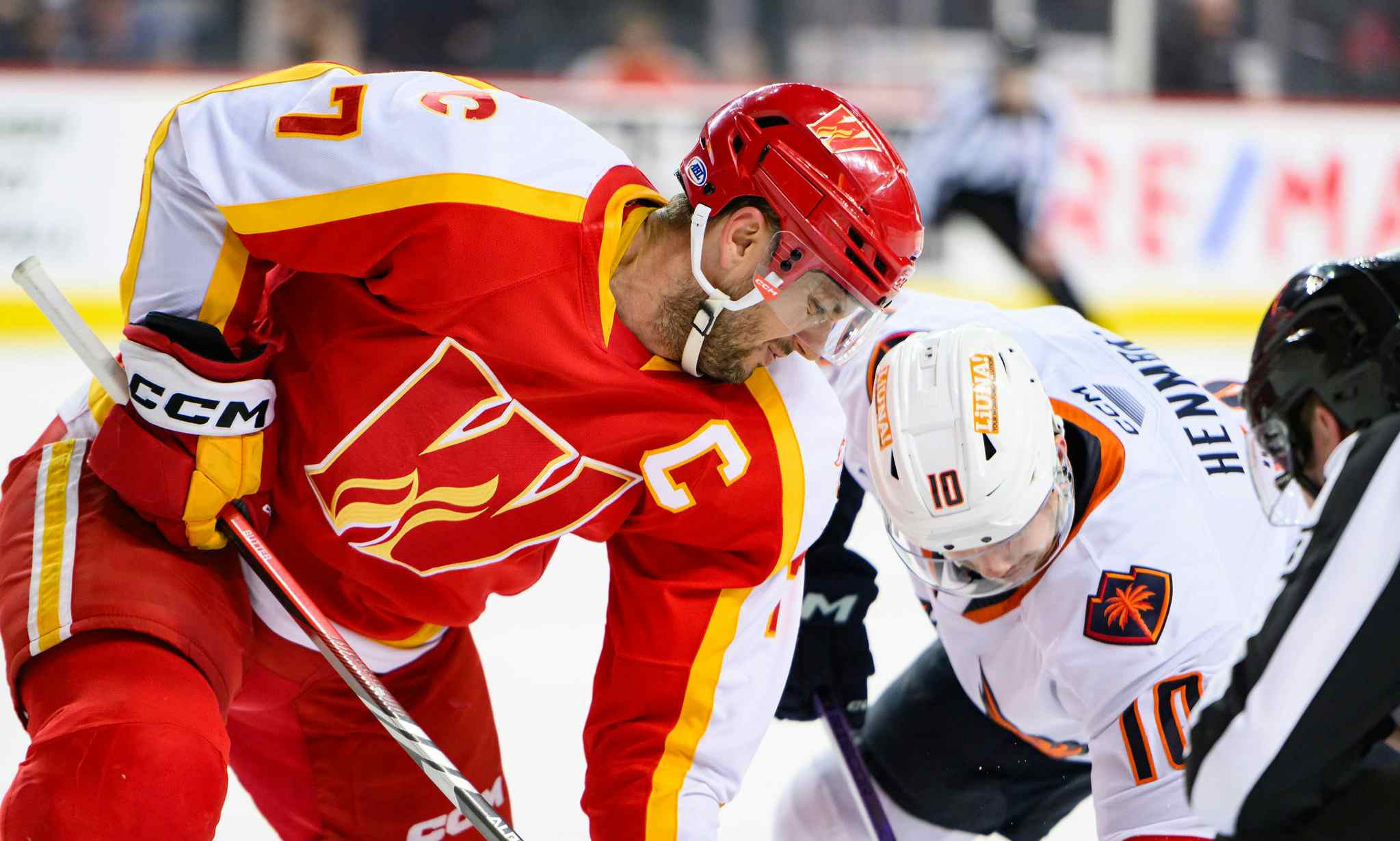Marian Hossa’s unreviewed goal was probably legal
By Ryan Pike
7 years agoLast night, the Calgary Flames played one heck of a game against the Chicago Blackhawks. However, with the game deadlocked at two goals apiece, an Artemi Panarin high wrist shot was knocked into the air by goaltender Chad Johnson, landed in the crease (after being contacted with a stick on its downward trajectory), and ended in the net via Marian Hossa.
Fans and onlookers were a bit perplexed by the play, and somewhat frustrated that Flames head coach Glen Gulutzan wasn’t able to challenge it under the league’s coach’s challenge rules.
After reviewing the rules and circumstances of the goal, it’s unlikely a challenge would have changed anything.
THE GOAL
Brodie and Hossa both swipe at the puck on its way down. It appears on the replay that Brodie’s stick is what contacted the puck – a belief shared by Gulutzan following the game. The puck lands behind Johnson in the crease and Hossa, who has position on both Brodie and Johnson, puts the puck into the net. Referee Ghislain Hebert was in position behind the net and declared it a legal goal immediately.
There appear to be two points of potential contention here: the high stick and the presence of Hossa in the crease.
THE RULES
The relevant rules at play here are Rule 60 (High-Sticking), Rule 69 (Interference on the Goalkeeper) and Rule 78 (Goals), specifically subsection 78.7 (Coach’s Challenge). Let’s start with the rule regarding Coach’s Challenge, since it’ll determine where we go next and which other rules are applicable.
The Coach’s Challenge:
Under 78.7, there are two scenarios where a coach may challenge a goal: they think the play was offside, or they think the goalie was interfered with. Whether or not a puck was high-sticked down prior to a goal (or even high-sticked into the net) is not something that is able to be challenged, though the referees can review that on their own.
Regarding goalie interference (78.7(ii)):

(78.7 also notes that a team needs a timeout to initiate a coach’s challenge, which the Flames used up midway through the third period after an icing.)
Since the standard for overturning the goal relies upon the definition of goalie interference, that’s our next stop.
Goaltender Interference:
Since Hossa was in the crease, there’s a case to be made that he impeded Johnson’s ability to play the loose puck after the initial stop. So what’s the standard for interference as defined by the rulebook?


This sounds promising. But there’s a subsection of the goalie interference rules specifically for situations like last night’s:


The first part of that section is the key one: if Hossa was in the crease playing a loose puck – and he was – then incidental contact while jostling for the loose puck would be permitted. Based on that standard, the Hossa goal likely would have been ruled a good goal had it been reviewed.
High-Sticking:
Just for kicks, what about the high stick that knocked the puck down? The Flames seemed to think that Brodie was the player that knocked it down.

Again: high-sticking isn’t reviewable within the scope of the coach’s challenge, but it likely would have held up as well (if the referees had decided to review that part of the scoring play independently of the coach’s challenge). The only way the goal would have been disallowed would be if the referees reviewed the high-sticking component and judged decisively that Hossa’s stick knocked the puck down from above the height of the crossbar.
IN OTHER WORDS
Long story short? The Flames couldn’t challenge the Hossa goal because they had used their timeout earlier in the period. But it likely wouldn’t have mattered anyway, because based on the definitions of goalie interference in the rulebook, it’s unlikely that a review would have resulted in the goal being overturned. The probable outcome would have been that Hossa was playing a loose puck in the crease and therefore incidental contact is allowed in an attempt to score.
Recent articles from Ryan Pike





